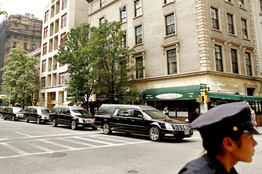To the right is an unusual image of Christ and completely opposite of the more serious Christ we see far more often. I love this image of the laughing Christ for one reason. The woman who gave me this picture knows me well and in recalling my first call to the diaconate, I told her, “I never in my life thought I would be a deacon.” This picture was a gift as I began formation. When I asked her why, she said, “I want you to know what Christ does when you tell him your plans.”
Does Christ have a plan for me?
In his letter to the Corinthians, St. Paul says, “For to one is given the word of wisdom through the Spirit, and to another the word of knowledge according to the same Spirit; to another faith by the same Spirit, and to another gifts of healing by the one Spirit, and to another the effecting of miracles, and to another prophecy, and to another the distinguishing of spirits, to another various kinds of tongues, and to another the interpretation of tongues. But one and the same Spirit works all these things, distributing to each one individually just as He wills.”
What are my gifts and how does God want me to use them?
In the previous post entitled “Marriage, the real vocation crisis” Laura rightfully expands the idea of vocation beyond the vernacular to include marriage. In all my years of working with youth, well-intended people often say one thing to young people that makes me cringe. Let me be clear – They mean well and they are actually trying to motivate a young person when they say it. Nonetheless, it makes me cringe because, it is simply not true. Here it is: “You can do anything you set your mind to” or, “You can be anything in life as long as you work hard enough.”
Brothers and sisters, for the Christian faithful, these cliches of motivation need some modification. For the Christian faithful, the first quote should read – “You can do anything God has called you to do, if you set your mind to it.” For the Christian faithful, the second quote should read, “You can be anything in life God wants you to be, as long as you work hard enough.” That is what we should tell young people and that is what we should be telling one another.
Peter’s calling and vocation
For example, Peter, the first Pope, tried to do what he wanted to do. Christ called him to possess the keys to heaven and earth and what did he do? He tried to be a fisherman again. And he wasn’t too successful, I might add. I am sure he set his mind to it and I am sure Peter tried hard enough. But, it did not work out because it wasn’t what God had called him to do. The Church was not built on the Rock of Peter because of his fishing prowess. The Church was built on the Rock of Peter because Peter followed Christ’s call.
“We only seek to do the will of God” – Mother Mary Lange, OSP
Brothers and sisters our life is not our own –It was given to us by Christ and it belongs to Christ. We have the free will to ignore that reality but, it is a reality nonetheless. In the Gospel according to John, Christ says, “It is not you who chose me but I who chose you.” Brothers and sisters, this is one of the most powerful statements of Christ. Christ has called all of us to a vocation. It is through this vocation that we can build up the Kingdom of God, we can spread the Gospel and we draw ourselves and others closer to Christ – Of course, we still have to work hard enough and put our minds to it.


